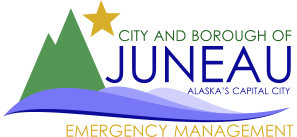Avalanche Advisory Archive Pre-2016
| Date Issued: | 2011-04-10 |
|---|---|
| Danger: | 2 |
| Trend: | 2 |
| Probability: | 3 |
| Size: | 2 |
| Problem: | 0 |
| Discussion: | The National Weather Service Forecasts- TODAY...RAIN SHOWERS MIXING WITH SNOW AT TIMES. LITTLE OR NO TONIGHT...RAIN AND SNOW SHOWERS. NO SNOW ACCUMULATION. LOWS MONDAY...RAIN AND SNOW SHOWERS LIKELY. LITTLE OR NO SNOW MONDAY NIGHT...CLOUDY. CHANCE OF RAIN AND SNOW. LOWS AROUND 32. LIGHT WINDS. We have received 37mm of precipitation at tram summit elevations in the last 60 hours. This delivered 24cm of dense new snows at that elevation after settlement. Eaglecrest is showing 20 cm of new snow as well at the UAS mid mountain plot. Winds averaged well over 20 knots during the first 30 hours of the storm, slowed for about 10 yours then returned to 15-30 knots. Winds were out of the SSE placing additional stress on our NNW faces. Look to see crossloading in the urban avalanche zones. We have seen an average of a few degrees of diurnal daily warming recently this adds stress to the snowpack during the warming and warmest periods of the day... With nearly 38mm(1.5\") of precip in the last 36 hours, yet less than .2\" of precipitation in the forecast for today and temperatures one degree cooler than yesterday, avalanche danger is Moderate at this time. There may be heightened avalanche conditions on specific terrain features. Be sure to evaluate snow and terrain carefully and identify those features of concern. Natural avalanches are unlikely, yet human triggered avalanches remain possible in areas. The snowpack is mostly stable. Be cautious of convex slopes above steep open faces with long runouts.... Be aware of possible windloading... Check to see how this new snow is bonding to the old snow surface in the areas YOU choose to ride... Yesterday field work continued to reveal trigger sensative areas in wind loaded pockets both at ridgeline and even lower down the mountain. It is quite spatially variable yet be aware the mousetrap has been set in places. Although time is our friend and the new snow will start to bond to the old snow surface, with increased loading today from new snow and wind human triggered avalanches are still quite possible in areas. Should avalanches occur they are not expected to be of any size in the urban areas to be concerned with. |
| Tip: | Special Thanks to SLF the Swiss Snow Institute... They are town this week working on new urban avalanche mitigation studies... We look forward to seeing what the world experts have to say about how to better our avalanche mitigation practices! THANK YOU FOR YOUR HELP! |
